Whether you’re welcoming a German Shepherd puppy into your home or aiming to teach an adult dog new tricks, mastering how to train a German Shepherd is both an art and a science.
As a seasoned German Shepherd owner, I’ve navigated the rewarding journey of training these magnificent dogs for years. German Shepherds stand out as one of America’s favorite breeds, and it’s easy to see why.
Their loyalty, intelligence, and eagerness to please make them steadfast companions and exceptionally trainable dogs.
So, in essence, here’s the short answer…
To train a German Shepherd, start with basic commands like “sit,” “stay,” and “come.” Use positive reinforcement techniques such as treats and praise. Consistency, patience, and socialization are key. Gradually introduce more complex tasks as your dog masters the basics.
In this guide, I’ll share the insights and techniques that have worked for me, honed through experience and a deep understanding of what makes these dogs tick.
Let’s begin!
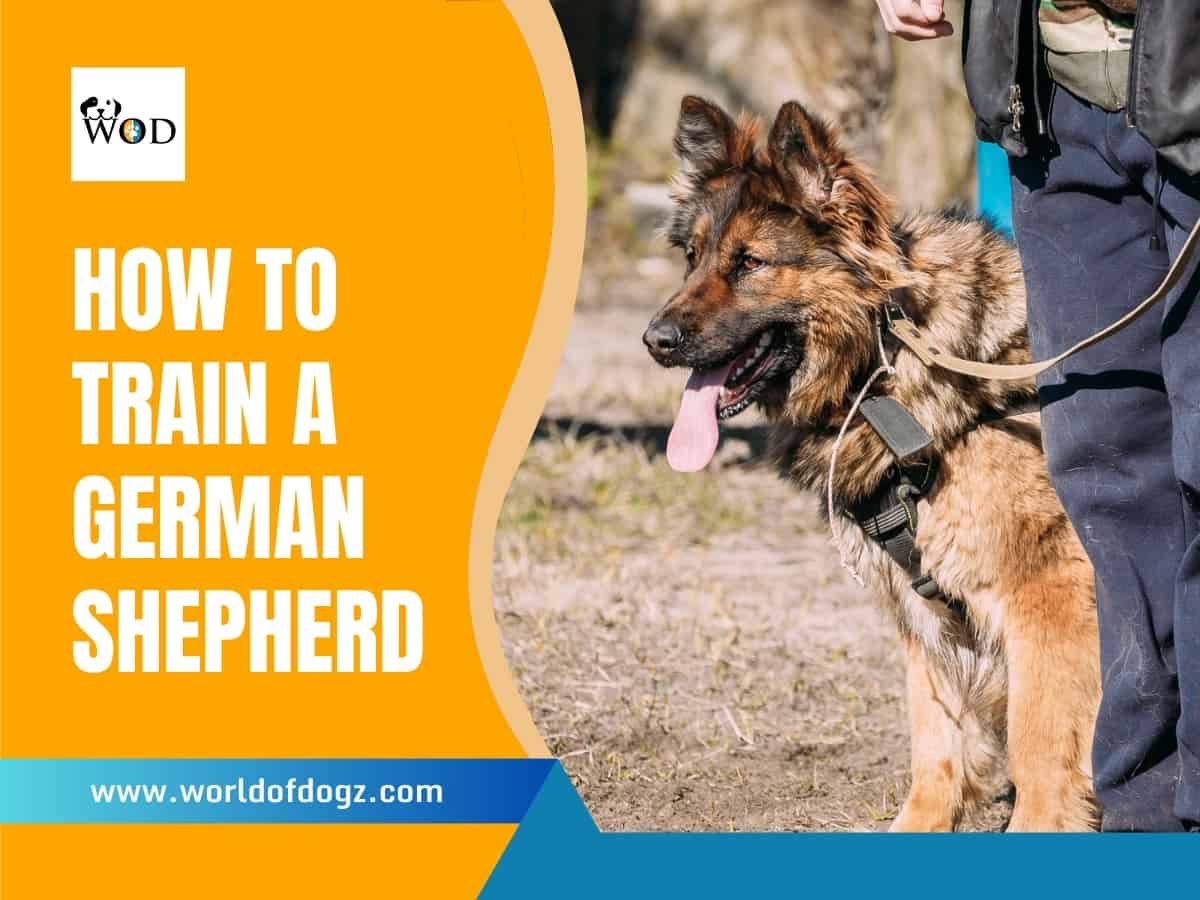
How to Train a German Shepherd
German Shepherds are exceptionally intelligent and are, therefore, pretty easy to train if you follow the correct steps.
Once you have the basics covered, you can progress to advanced German Shepherd training.
But let’s start with the essential foundations of puppy training.
1. Early Puppy Training is Essential
Experts in canine behavior say you should train your German Shepherd steadily while it is still a puppy. Your pet will learn what is expected of him from a young age, which helps your dog be more at ease and confident.
While most of us know that the best time to bring a puppy home is between eight and ten weeks old, we might be interested in learning that the puppy’s social training should begin a little before that.
According to scientists, between 3 and 12 weeks is crucial in a puppy’s socialization. This period’s socialization and training experiences have lasting effects on the dog’s adult behavior.
Good training during this period makes a German Shepherd puppy respond better to humans. Lack of training at this age can make some dogs untrainable and unapproachable as adults.
Research testing the tendency of dogs to “go with the crowd” revealed that dogs would stick to what they have learned and not conform to other dogs’ behavior even under different manipulated situations.
The excellent early training you give to your German Shepherd puppy will stick with him, and you can expect your dog to portray good behavior in any situation.
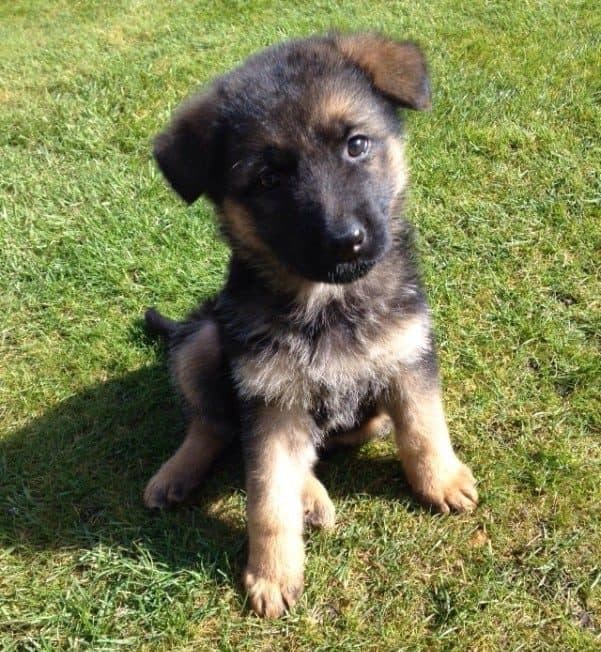
Best practices for training a German Shepherd puppy:
- Start training as early as possible – A puppy is ready to learn a little when the breeder releases him into your custody. Early training is a key part of German Shepherd development.
- Be patient – You will need lots of patience when training a German Shepherd puppy, as young pups are inquisitive. But training becomes easier once they see you as their sole provider and as the source of yummy treats.
- Recap – Take a short break and recap to determine whether the command has been learned. Remember to keep training sessions short so your pup does not lose concentration or get frustrated. A 5-10 minute training session is sufficient three to four times daily. You can increase the session length as your puppy grows and gets used to the drill.
- End on a positive note – Always end every training session positively, even if your German Shepherd puppy didn’t learn the command for the day. That might mean a few minutes of play or a quick walk in the park.
2. Gather Your Training Tools
Before initiating the learning session, ensure you have all the training essentials to train your German Shepherd effectively. You will need:
- Treats: Purchase tasty and healthy training treats for your German Shepherd puppy. I like Zuke’s Puppy Naturals from Amazon. They’re nice and soft for obedience training and only 3.5 calories per treat. I also like to use small pieces of chicken or meat.
- Crate/Kennel: When you teach your GSD puppy the commands “KENNEL” or “CRATE,” you must point at one. Choose a crate large enough for your puppy to grow into. A size 48″ is perfect. I recommend a crate with convenience features like double doors and a tray, such as the Midwest Homes for Pets iCrate. This also has an all-inclusive divider, so you’ve nothing else to buy.
- Toys: Toys serve as a reward during training and as play objects. You might want to give your puppy his favorite toy when he learns a new command or when teaching the “LET GO” command. I love the KONG Puppy Toy as it’s perfect for German Shepherds, being highly durable for those razor teeth. This toy is incredible for chewing, playing chase, and fetch – or you can even stuff it with treats.
- Leash: A leash is essential when starting German Shepherd training. You can use it to control your pet and later test his ability to execute a command off-leash. A harness is also a good idea to use for outdoor training and walks. Many dog owners find a no-pull harness, such as the Julius-K9, does just the trick, and I have used this one before. However, I now prefer a front attached harness for even less pull, so I switched to the Walk Your Dog With Love No-Pull Harness.
Note: Clicking the above link(s) will take you to Amazon or an online store where we have an affiliate relationship. If you make a purchase, we may earn a commission at no additional cost to you.
You can proceed to the other obedience training steps with your training tools ready.
3. Teach Basic Commands Using Verbal and Gestural Cues
Every good and well-behaved German Shepherd you see around should immediately tell you of a well-trained dog. While some people assume that dogs can guess what is in their minds and execute it, this is never true.
Your German Shepherd puppy relies on your communication to become a well-behaved companion. But you need to train him to decipher the communication codes first.

Your German Shepherd is Particularly Receptive to Your Sound
Dogs have an innate tendency to act according to their breeding purpose. As such, a German Shepherd might quickly protect its owner in a dangerous situation by following its “herding genes.”
To become the friendly family dog you are looking for, a German Shepherd will rely on verbal commands to understand your wish, and they respond remarkably well with proper training.
Researchers have discovered that dogs can understand some human words because their brains process language in a way that is similar to humans.
But it is also suggested that, before your dog understands your words, they first notice the intonation of your voice.
Hence, regardless of what is being said, dogs will first respond to voice pitch, which is crucial for general training and obtaining your dog’s attention when he can’t see you.
Coupling Verbal and Gestural Cues Help Your GSD Learn Better
Most professional dog trainers will tell you to couple a verbal command with a gesture.
The good reason for this advice is that body language is a canine’s primary mode of communication, and they have an excellent capacity to read visual cues.
Dogs can tell when you are sad from your face, and they understand your hand and other body signals in training.
This fact has been used to explain why deaf dogs and those with optimal hearing capacity will learn.
Research has confirmed that coupling your words with a gesture has a better impact on dog obedience, and this gets even better if the words and gestures are placed in a context.
For example, telling your dog to search while pointing to the direction you want him to go will be more effective in a context where the search was done before.
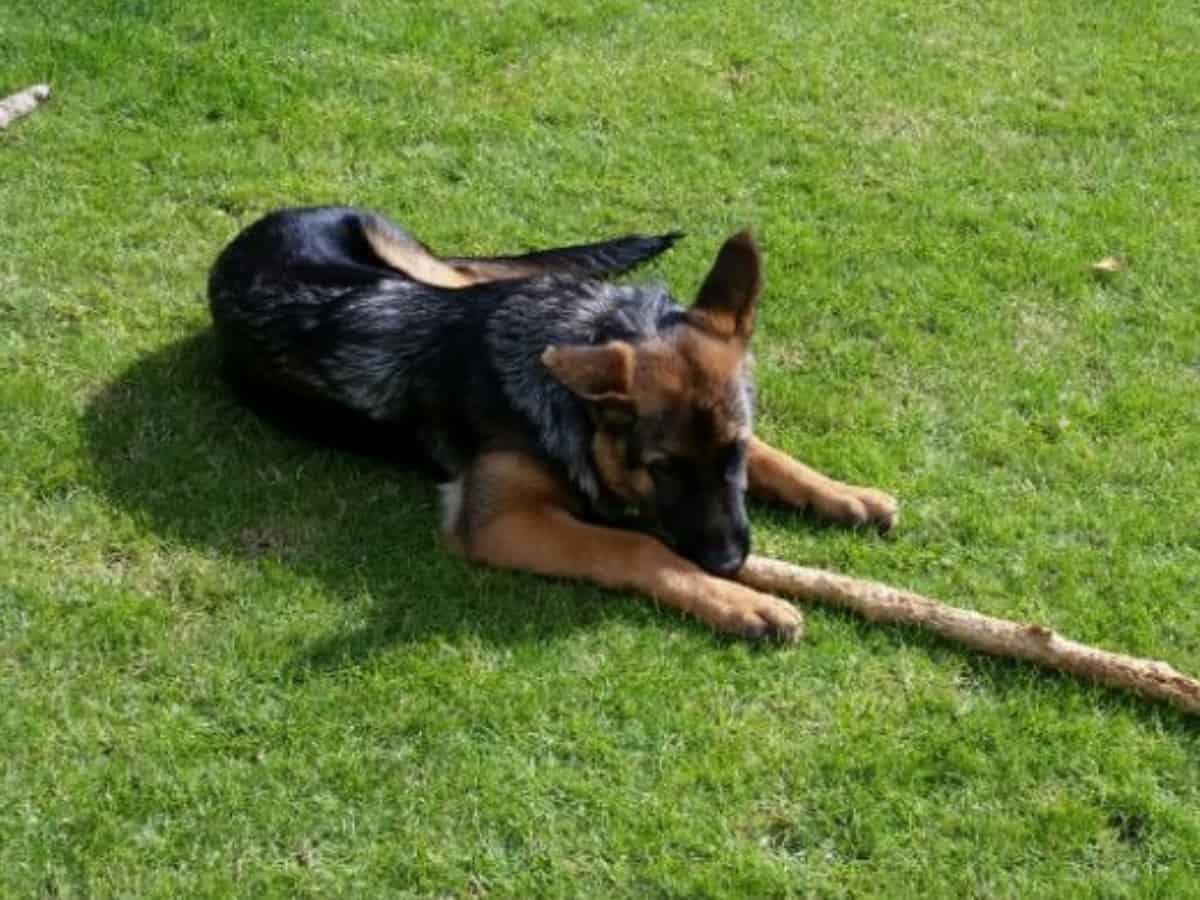
The Key Commands
Most dogs will need obedience training in basic and advanced skills. Basic obedience training is usually done on a leash and involves the first commands your German Shepherd should learn.
- Sit! – The very first command your German Shepherd puppy learns. It can be on or off-leash and is especially useful when your dog’s movement can be distracting (when you have visitors at home or talking to someone during your dog’s daily walk).
- Come! – Used to call your German Shepherd to you and can be on or off-leash. It is especially important should your dog start wandering away from you.
- Stand! – At this command, your dog should change its sitting or lying position to standing.
- Down! – Directs your GSD to go down into a lying position. It could be coupled with the indication lying flat with your palm. The “DOWN” command tells your dog to lie low in advanced Schutzhund training for military German Shepherds.
- Leave it! – This command trains your German Shepherd puppy not to pick up something it shouldn’t. It could be some food from the kitchen counter, such as chocolate that is toxic to them, or a toy for your child.
- Stay! – You use this command to train your GSD to stay put and not move from the spot where he is, whether on or off-leash.
- No! – Prohibits your German Shepherd puppy from doing something or interrupts his behavior. It should always be said in a gentle tone.
- Attention! Or look at me! – This command is essential in GSD training. It calls your pup’s attention so that you can give instructions for the following command or when your dog is not paying attention to you. Your puppy should focus and look at you on the call to “ATTENTION.” It could be accompanied by a tap of fingers or a vertical pointing finger.
- Heel! – This command trains your German Shepherd to walk beside you. The “HEEL” command directs your dog to walk on your left side on a loose leash with his head at the same level as your knee in competitive sports.
- Let go! – you are training your GSD to drop whatever is in his mouth. It could be food from the dining table or stuff on the roadside while you take your daily walk.
- Go inside! – You command your German Shepherd pup to enter a room. Maybe he’s outside the door barking at people or other dogs passing by your home.
- Go out! – You train your German Shepherd to leave the room. He might be reluctant to attend the day’s advanced obedience command session.
- Kennel/Crate/Bed – Your GSD should climb into his crate, kennel, or bed.
- Good! – A congratulatory verbal reward that tells your dog he has done well. You may pair it with scratching behind the ears or a treat. It may also be used as “GOOD DOG!” Just be consistent in the beginning until your German Shepherd can make out that the two have the same meaning.
- OK – This command gives your dog the go-ahead. He might be looking at you for approval to eat his food.
How To Teach The First Basic Things To Your Pup…
4. Train Your German Shepherd Using Positive Reinforcement
It’s no secret that reward-based training (positive reinforcement) is the best dog training approach in the dog world.
Studies have compared and ascertained that positive reinforcement best impacts dog behavior and temperament.
In contrast, aversive training methods (negative reinforcement and positive punishment) can harm the dog’s mental and physical health.
Positive reinforcement is built on rewarding your dog whenever they perform positive behavior or heeds your command.
Aversive training methods follow the principle of punishing your dog when it does not heed a command.
A reward can be anything that your dog values. It could be a scratch behind the ear, verbal praise (“GOOD DOG!”), a favorite toy or game, and most commonly, a tasty treat.
Dogs have the cognitive ability to associate a reward (effect) with a particular action or behavior (cause).
If we could put our words in their mouth, they would say, “If I am told to come, and I do so, the yummy liver biscuit is going to be pulled out of the bag, and I can enjoy it!”
Even though your dog may obey the “COME” command to get the reward initially, consistency in the command-reward dynamic will create a behavior pattern, as shown below.
You can alternate rewards as your German Shepherd progresses (change biscuits for verbal praise or a favorite toy).
Even when you eventually withdraw the rewards because the behavior has been formed, praise and contact rewards (scratch behind the ear) will always remain a key part of your relationship with your German Shepherd.
Learn More about Positive Reinforcement vs. Punishment…
5. Socialize Your German Shepherd
You want your German Shepherd to have the right emotional state, especially around children and other animals. This becomes quite important once the GSD grows bigger.
Socialize Him Well
To train a German Shepherd to be friendly, you must expose him to people and other pets during his formative years. Dogs also need to experience many different environments.
Reward your GSD for behaving well in new situations, as this associates positive feelings with witnessing what he might otherwise assume are foreign entities.
Best practices for socializing a German Shepherd:
- Start early – Training your German Shepherd to be friendly starts when the puppy is released into your custody. Socialization is a crucial part of your German Shepherd’s development. Do you want to know more about socialization? Check out this detailed post, Easy Ways To Socialize a German Shepherd.
- Supervise sensitive interactions – Don’t introduce a baby or another puppy to a German Shepherd without understanding the nuances of such situations. Introductions should be controlled and not rushed.
Trigger Calmness on Command
German Shepherd puppies can become boisterous. They can also show aggression, dominant, or territorial behavior if they feel threatened or have too much pent-up energy.
Adequate socialization, sufficient daily exercise, and training your German Shepherd to be calm can prevent these behaviors.
To train a German Shepherd to be calm, you must anchor a command that initially correlates with his calmness and later triggers it. Gradually practice using the word “CALM” or “CALM DOWN” to return him to a neutral state.
Best practices for training a GSD to be calm on command:
- Always start slow – It is crucial not to overplay your hand by trying to get your GSD to “calm down” from a highly agitated state. Initially, the anchor will work when your dog is only mildly anxious.
- Never reward aggressive behavior – Do not reward your German Shepherd when he is aggressive. Some inexperienced dog owners assume that a GSD is cranky because he is hungry and feed their pet without realizing they’re rewarding aggressive tendencies.
6. Discourage Bad Behavior
While teaching tricks can be fun, starting by weeding out bad behavior while your GSD is still young is better.
Most German Shepherds’ undesirable behavior results from poor training, misunderstanding, boredom, or lack of stimulation and exercise. Fortunately, bad behavior can be easily managed and corrected.
To strengthen this point and learn more, here’s my article on disciplining a German Shepherd.
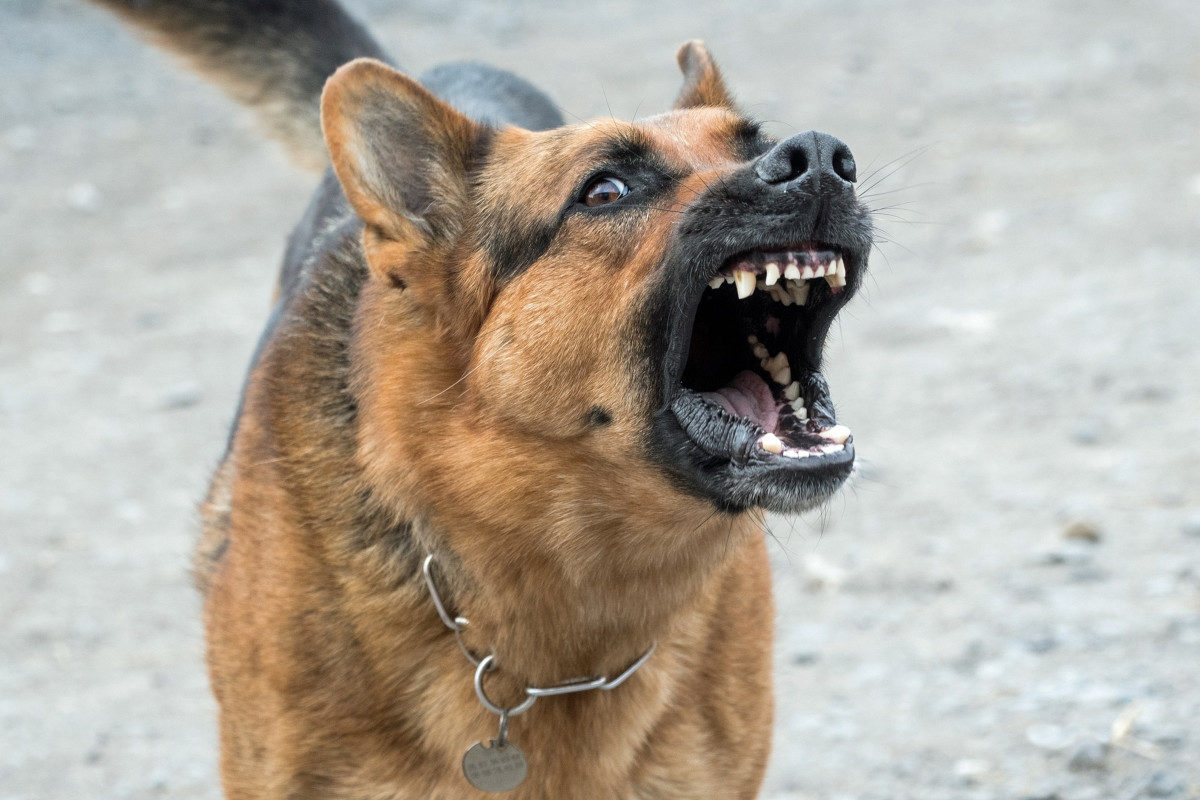
Stop Unnecessary Barking
You must first calm the dog down to train a German Shepherd not to bark. As soon as he becomes silent, you should say a specific word.
This word gets anchored to the dog’s silence. By giving him a treat for being quiet, you will incentivize him to stop barking when prompted.
Best practices for training your German Shepherd to be silent on command:
- Do not use the command word prematurely – It will take time for your German Shepherd to associate your command with being quiet. Don’t prematurely use the command; wait for the GSD to start associating the word with silence, or the command will be weakened.
- Practice “SPEAK” and “QUIET” commands in contrast – Once your GSD has internalized the connection between the respective commands and his response, exercising one after the other will improve his flexibility and reduce the time switching from barking to being silent and vice versa.
Discourage Jumping
Jumping up is innate canine behavior, and dogs do it to greet you or get attention. However, jumping up at people annoys your guests and should be discouraged.
To train your German Shepherd not to jump up, you need to eliminate the reward, i.e., the attention he gets when he jumps up.
Best practices for training your German Shepherd not to jump up:
- Avoid smiling or laughing when the GSD jumps – you may inadvertently encourage or reward the dog affectionately. You must resist showing signs of liking the behavior, no matter how cute it may seem for a young pup.
- Ignore your GSD when he jumps – He will soon learn that he does not get attention if you turn your back and walk away. Reward him with a treat when he stops jumping and has all four paws back on the ground.
Discourage Destructive Chewing
To train a German Shepherd not to chew, you must redirect his energy to alternatives, like going on walks and playing games.
Although chewing is natural for dogs, it’s often the result of pent-up energy that can be exhausted through productive means.
Best practices for training a GSD to stop chewing:
- Redirect the behavior to chew toys – Giving your dog chewing toys offers healthy alternative stimulation for your pup’s innate desire to chew, especially when teething.
- Do not scold the GSD long after he has chewed something – Grounding your dog for chewing works only if he is reprimanded immediately. The German Shepherd will be unable to associate the effect with the cause and will consequently get confused.
Do you want to know more about stopping destructive chewing? Check out this detailed post, How to Stop a German Shepherd From Chewing.
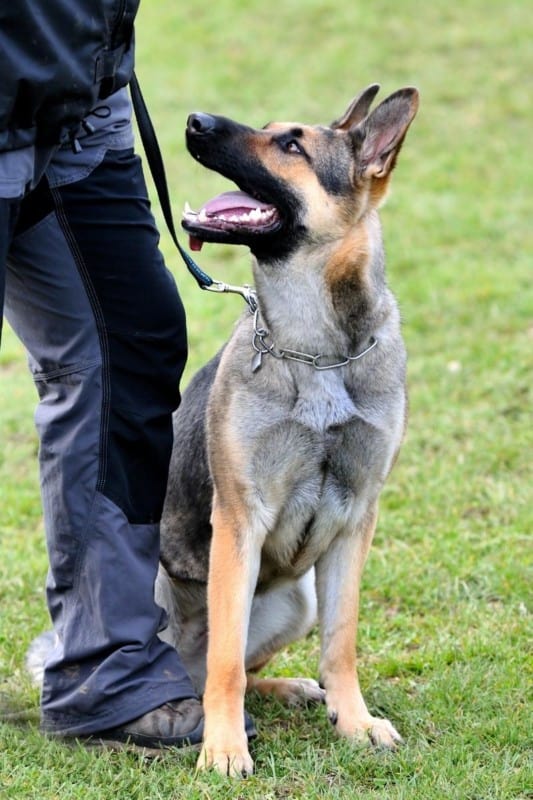
7. Progress to Advanced German Shepherd Training
With time, as your German Shepherd puppy advances into adulthood, he’ll need training in the following advanced commands:
- Jump! – The command directs your dog to jump over a barrier, fence, wall, etc.
- Fetch! – You train your German Shepherd to pick an item and bring it to you. It could be a couch blanket, a newspaper, etc. It is also used as a sports/play command when an object is launched, and your dog should retrieve and bring it back.
- Track! – The command trains your GSD to track a person or an object. It is especially useful for police/military German Shepherds.
- Speak/Bark! – You train your German Shepherd to bark or be vocal. Maybe there is an intruder, and you want your dog to scare them away.
- Quiet! – Directs your dog to quit barking at a visitor or other stimulants.
- Bite! – You direct your dog to bite into an object. You will train your German Shepherd puppy with toys or other objects but might direct your dog to bite at an aggressor later.
- Guard! – Trains your German Shepherd to keep watch at the door or be alert around an item.
- Go ahead! – You train your German Shepherd to stay ahead of you. Also used in agility competitions to command your dog to go ahead of you.
FAQs
Are German Shepherds Easy to Train?
German Shepherds are easy to train due to their high intelligence and strong desire to please their owners. They love obeying your commands and thrive in an environment with structure, attention, and lots of energy. Their desire to please comes from their strong, loyal, and protective traits.
When to Train a German Shepherd
You should start training a German Shepherd at 8 weeks old or when the puppy is released into your custody. Initial training will not be intense at all but will feature crucial aspects like socializing, basic commands such as “SIT” and “COME,” and wearing a harness, none of which can be deferred.
How Long Does it Take To Train a German Shepherd?
On average, it takes two to three months to train your German Shepherd to follow all the basic commands like “SIT,” “FETCH,” “HEEL,” and “COME.” Obedience training classes can start at 4-5 months old. By 12 months old, they should be pretty much trained. However, dog training is an ongoing process.
Of course, there are many variables, such as the individual dog, how often you train them, whether you remain consistent, techniques used, etc.
Check out my puppy training schedule to know what to teach and when, German Shepherd Puppy Training Schedule.
Let’s Wrap This Up!
Training your German Shepherd is an ongoing process. However, you shouldn’t see it as a chore but as a fun activity and part of your daily routine.
Here is a recap of the main points of the article:
- Dogs notice first the intonation of your voice. So, always use a calm and friendly voice tone when training your German Shepherd.
- Using commands with gestures helps your pup learn faster. Body language is a canine’s primary mode of communication.
- Your German Shepherd will always adhere to the good behavior you have taught them because dogs naturally stick to what they have learned and do not follow the crowd.
- 3-12 weeks of age is the best time for puppy socialization. You should train your German Shepherd puppy to behave well when you get him. This should be done by positive reinforcement and never aversive methods.





